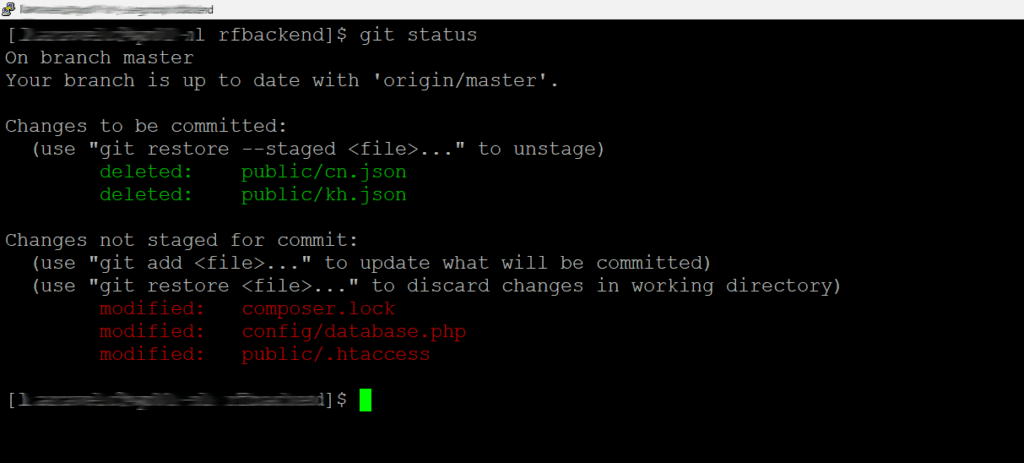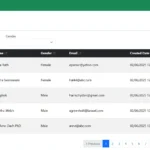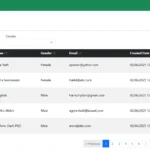If you’re working on modern software projects, version control is essential — and Git is the most popular tool for the job.
In this post, we’ll go through the important Git commands every developer should know to manage their projects efficiently. These commands will help you track changes, collaborate with others, and maintain a clean project history. Whether you’re a beginner or looking to refresh your Git skills, this guide covers all the important Git commands you’ll use in your daily workflow.
Table of Contents
Why Need to Learn Git Commands
Learning important Git commands is essential for every developer who wants to manage code efficiently and collaborate effectively on projects. By understanding these important Git commands, you can track changes, resolve conflicts, and maintain a clean version history with ease. Whether you’re working solo or in a team, mastering Git gives you full control over your source code and ensures a smooth, reliable workflow throughout your development process.
1. git init – Initialize a New Git Repository
Use this command to start a new Git repository inside your project folder.
git initDescription:
This command creates a hidden .git folder that tracks changes in your project. It’s the very first step when starting version control for a new project.
💡 Tip: Run this inside your project’s root directory only once.
2. git clone – Copy an Existing Repository
If you want to work on an existing repository, use this command to download it to your local machine.
git clone https://github.com/username/repository.gitDescription:
This command creates a local copy of a remote repository (e.g., from GitHub, GitLab, or Bitbucket). It also automatically sets up the connection between your local and remote repos.
3. git add – Stage Changes for Commit
After editing, creating, or deleting files, you’ll need to stage those changes.
git add filenameor stage all changes at once:
git add .Description:git add tells Git which files you want to include in your next commit. It doesn’t save them yet, but prepares them to be recorded. It is part of the important Git commands you’ll use every day when managing changes.
4. git commit – Save Your Changes
Once you’ve staged your changes, it’s time to commit them.
git commit -m "Describe your changes"Description:
This records your changes into Git’s history, creating a new snapshot of your project. Always write clear, descriptive commit messages.
5. git push – Upload Changes to Remote Repository
When your local commits are ready, send them to your remote repository.
git push origin mainDescription:git push uploads your commits from your local branch to the corresponding branch on the remote repository (like GitHub or Bitbucket). One of the important Git commands to stay up to date with teammates.
💡 Tip: Replace main with your branch name if it’s different.
6. git pull – Update Your Local Repository
To fetch and merge changes from the remote repository into your local branch:
git pull origin mainDescription:
This command is a combination of git fetch (download changes) and git merge (apply them). Use it regularly to keep your local branch updated with remote changes.
7. git status – Check the Current State
Quickly see which files have been changed, added, or staged.
git status
Description:
Displays the current status of your repository. It’s one of the most frequently used commands — run it before committing or pushing to verify what’s changed.
8. git log – View Commit History
View a list of all commits made in your project.
git logDescription:
Shows detailed commit history, including author, date, and message.
💡 Tip: Use git log --oneline for a simplified, one-line view of each commit.
9. git branch – Manage Branches
Branches let you work on new features or fixes without affecting the main codebase.
git branch
Description:
Lists all branches in your repo. To create a new branch, use:
git branch branch-nameSwitch to it with:
git checkout branch-nameDescription:
Branches let you work on new features without affecting the main codebase. Part of the important Git commands to manage different development tasks.
10. git merge – Combine Branches
When your branch is ready, merge it back into another branch (usually main).
git merge branch-nameDescription:
Combines the changes from one branch into another. Often used after completing a feature to bring updates into the main branch.
11. git remote – Manage Remote Connections
Check or add remote repository connections.
git remote -v
Description:
Displays the list of connected remote repositories. To add a new remote, run:
git remote add origin https://github.com/username/repo.git12. git reset – Undo Changes
If you made a mistake or want to remove staged files before committing:
git reset filenameTo completely reset to the last commit:
git reset --hard HEADDescription:git reset is powerful — it can undo commits and staged changes. Be careful with --hard because it deletes local modifications permanently.
13. git restore – Discard Local Changes
If you want to undo changes in your working directory or unstage files:
git restore filenameTo unstage a file that was added to the staging area:
git restore --staged filenameTo restore a file to its state in a specific commit:
git restore --source HEAD~1 filenameDescription:git restore is a safer, more modern way to undo changes in your working directory or staging area without affecting commit history. Use it to discard uncommitted changes or to unstage files. Unlike git reset, it does not move the branch pointer.
14. git diff – Compare Changes
See exactly what has changed in your files.
git diffDescription:
Shows line-by-line differences between your working directory, staged changes, or commits. Great for reviewing code before committing.
15. git fetch – Download New Data
Fetch new commits from a remote repository without merging them.
git fetch originDescription:
This updates your local view of the remote repository, allowing you to review new work before merging it.
16. git config – Set User Configuration
Set up your Git identity or global settings.
git config --global user.name "Your Name"
git config --global user.email "[email protected]"Description:
Defines who made the commits. These details show up in your commit history.
17. git rm – Remove Files
Delete a file from both your working directory and staging area.
git rm filenameDescription:
Removes files tracked by Git. To remove a folder and its contents, use git rm -r foldername.
18. git stash – Temporarily Save Uncommitted Work
Need to switch branches but don’t want to commit unfinished work?
git stashDescription:
Saves your current changes temporarily so you can work on something else. Restore them later with:
git stash pop19. git checkout – Switch Branches or Restore Files
Move between branches or restore a previous file version.
git checkout branch-nameDescription:
Useful for switching branches or recovering files to a specific state.
20. git tag – Label Important Commits
Add version tags to specific commits (like v1.0).
git tag v1.0Description:
Tags are used for versioning and releases. You can push them to remote with:
git push origin --tagsConclusion
These important Git commands are essential for developers of all levels. By mastering commands like git add, git commit, git branch, git merge, and git push, you can confidently manage your projects, collaborate with teammates, and maintain a clean Git history.
Review these commands regularly and practice using them in real projects — these important Git commands are the foundation of effective version control and professional software development.






